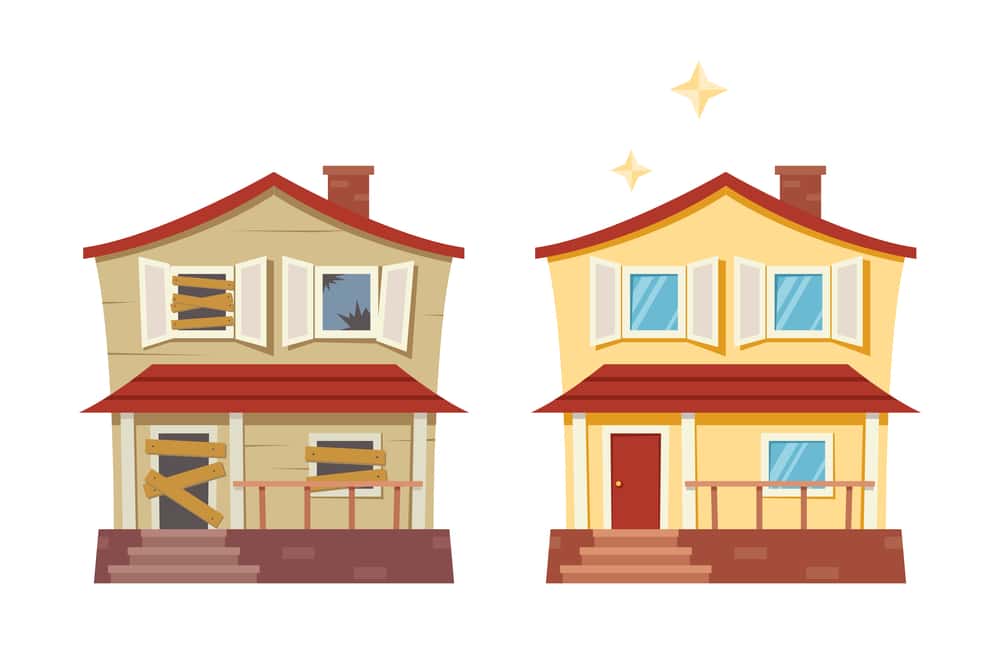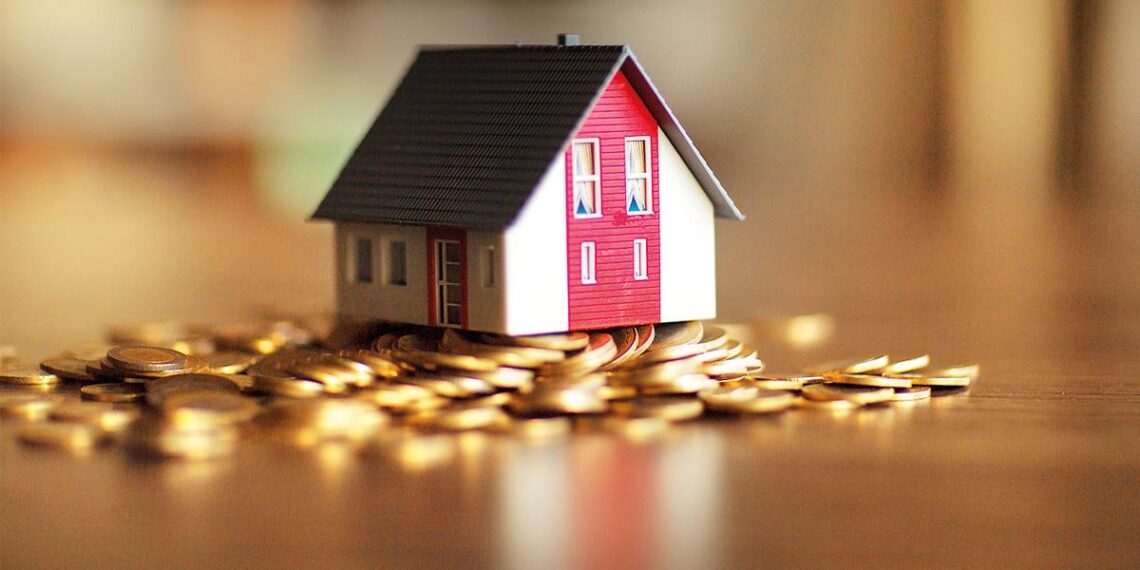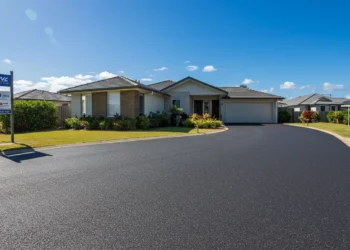Has an idea struck your mind to fancy up your property to ascend the value to fetch the best possible price? Do you watch TV shows like “The Block”, which promote flipping houses ideas? If you say yes to my question, you are looking for information, guidance and tips regarding flipping houses.

It is a well-known fact that the Australian market has a booming property market, one of the strongest markets in the world. All these factors have added to the greater interest of people in flipping houses to make maximum profit. However, before starting to plan anything, you should know every possible thing regarding the investment.

There are several platforms that popularise the home flipping ideas amongst people. This idea is also taught and explained in various real estate seminars and workshops. I suggest reading the entire article to seek some guidance, as we will be discussing all the aspects of house flipping in as much depth as possible in this article. Here we go.
What Is A Flipping Houses Idea?
- In a simplified way, a person who buys property with the intention to renovate or repair it to add value to sell it for a handsome profit is a house flipper. Property flipping can fetch you a decent profit if carefully researched and pursued. It can turn out to be a risky investment, too, if done without understanding all the pros and cons. Many house flippers suggest that a renovation is worth spending if you earn double your renovation cost, which is not always practically possible.

- Becoming a successful home flipper is more complex than shown in TV reality shows. It involves immense hard work and could be a roller coaster ride. Flipping homes demands the investment of money, time and emotion, which is not everybody’s cup of tea.
- The flipping houses ideas have varied dimensions. When you watch flipping houses shows on TV, you might ask yourself, “can I earn profit with flipping houses ideas? Of course, you can, but after a thoughtful process and risk calculations involved. In Australia, flipping homes is a common term in real estate known as one of the profitable property investment strategies.
- House flipping can be profitable and enjoyable if you plan it right and understand the potential return on investment. Sadly, most people consider this business a smooth-going project, thinking they’ll buy a property, invest in basic cosmetic renovation and earn profit. They miss the hidden and sudden costs that may turn profit into a loss.
Points To Consider To Become A Successful House Flipper
1. Money
Becoming a home flipper needs considerable money to meet varied costs such as buying the property, capital gains tax, if any and renovation costs. All these can come from either your hard savings or loan. While applying for a loan, think judiciously about the type of loan and its repercussions, as repaying may take longer than you presume. Hope for the best, and be ready for the worst! During dire need of money, you may not get the desired price for the property and might have to hold it longer. Think twice before moving a single step further.
2. Efficient Team
A team of talented members can help you wind up the renovation project within budget and a limited timeframe. An efficient team of plumbers, electricians and other reliable professionals is a prerequisite for a profitable home flipping.
3. Reasonable Timeline
Consider the realistic timeframe to complete the project because unforeseen circumstances and renovation demands do exist. Try to consider extra time in each process of the project.
4. Much Thought Plan
A solid plan is essential to go with the budget and schedule to achieve your profit-making vision.
5. Be Flexible
Despite planning the process well, unforeseen hindrances come along the way. Be ready to face and handle such challenges to complete the project on time and within the estimated budget.
6. Be Disciplined
Following the budget, timeline, and strict discipline is core to accomplishing the renovation on time and within budget. There will be a situation when you will go to the extreme of either cutting corners or overspending on items never seen in the list of to-do things.
7. Have Patience
It is of utmost importance for home flipping. Building a house or renovating it is time-consuming. Buying a home, beautifying and selling to the prospective buyer willing to pay the best possible price is a matter of patience. Wait for the right time and buyer because a hasty decision might affect the profit.
8. Be Tough
Many times, things go differently than our planning. It would be best to be thick-skinned to tolerate the high and low tides.
9. Map The Highest Price Of The Property
You need to map the market to observe the maximum price achieved for the property. If a property fetches $8,00,000 and aims to dispose of it at $10,00,000, you will face multiple challenges to surpass the maximum price achieved so far, or you might even incur a loss.
10. Research About The Real Estate Market
Become an expert in the real estate market with in-depth information about the target audience, their expectations, and the target market.
11. Target The Low-Price Property
Try to buy the property at the lower possible price to maximise the profit. Though it’s not easy in a competitive market, you might get it if your fortune favours.
12. Plan The Type Of Loan Carefully
Plan for the best and be ready for the worst! Never think it won’t matter what type of loan you opt for since you won’t hold the property for long and will repay the loan as soon as possible. Consider sudden unexpected situations when you can’t sell the property at a reasonable price. You may have to hold the property for a more extended period.
13. Minimise The Renovation Cost-Effectively
Keep a close watch on the renovation cost. Do a part of the work yourself, but do not slow down the pace of work, further adding to the holding cost of the property.
What Is The Process Involved In Renovating For Maximum Return?
Once you have made all the plans of flipping house for profit, a question arises about how to implement thoughts into reality. The process begins with a deep analysis of the entire process from beginning to end for better clarity and help you make a strategy to achieve the goals.

Designing
The design process is one of the lengthiest parts, which may take between 2 months to 2 years on average. You can’t extend it for so long if you are renovating for profit, as a prolonged timeline will add to other costs. Decide your priorities, such as do you want cosmetic renovation or structural changes and many more similar questions. Refrain from frequent back and forth with the design team.
The Tender Process
It’s again an essential part of the process, though more interesting than the design process. Before calling for tender, be clear if you want to hire a builder or work in a blended model. All these will ensure ease in deciding the level of tendering required. Read all the tender documents carefully because a low-price tender may result in a more expensive and time-consuming affair if not analysed carefully on time.
The Process Of Construction
Regarding house renovation, the first thing that strikes the mind is construction. The construction time depends on the team size and the amount of work. Despite all the complete proof plans, there might be deviations due to sudden unexpected structural demand.
The Flaw Period
Check out for any minor defect before starting the selling process, as a small defect might result in a high cost and more significant inconvenience.
Finally, The Style Time
And finally, the house has turned into a home. If you are renovating to stay, it will take longer as decorating a home is time-consuming. However, if you are styling to sell for profit, don’t take long, as time is money.
Avoid These Common Mistakes.
- Never let go of the undervalued property.
- Don’t overspend on the renovation if you are doing it to earn a return.
- Don’t sell the property hastily when market conditions are not conducive for sale.
- Pay attention to the types of loans. If you retain the property longer than expected, the loan repayment will become a burden.
- Supervise the design and construction process to minimise mistakes.
Pros And Cons Of Flipping Houses
Pros
- Quick return on investment – You can earn profit within six months of investment if everything goes as per the plan and no unforeseen circumstances come on the way. Depending on the market, you can hold it for a while to let the market grow naturally.
- Robust professional network – In becoming a home flipper, you can list all the professionals like a contractor, real estate agents, solicitors, insurance brokers and other investors that will help you in future alliances or any advice.
- Renovation experience – You can add on the enriching experience of renovation and construction, making your future projects easy to handle. Experience makes a person perfect.
- Master the art of property investment – With experience, you will master the art of house flipping and other aspects such as negotiating, understanding the local property market well and many more.
Cons
- Incurring loss instead of earning profit – Several factors disrupt the balance of profit and loss. Certain unexpected circumstances, such as a hike in interest rates, unanticipated renovation costs, etc., result in lower profit than expected or a complete loss on many occasions.
- Property holding cost – Often, the property is sold outside our planning for numerous reasons. In such cases, the holding cost of the property goes high due to maintenance for a prolonged period and the extended repayment timeline of the loan. Property investors refer to it as “dead money”.
- Stressful – Buying a property of the correct value, renovating it and selling it to the potential buyer at a high price takes time and energy and is mentally tiring. “That’s easier said than done”.
- Missed opportunity cost – When you sell the property at the wrong time, you miss the opportunity cost of selling it at a higher price.
Conclusion
Home flipping seems a cakewalk to many, but it is more challenging than it appears. Many think buying a property, making a few cosmetic changes and selling it for profit is a smooth process. Never rule out the pros and cons involved at every step. Calculative processes and patience will ensure profit; hasty decisions and lack of research will affect the return. Market mapping and understanding the target buyers’ intention will count on the profit. Be extra careful while planning the entire process of house flipping.
FAQs
What Is Flipping Houses?
Flipping house is a popular property investment strategy in Australia. The strategy involves:
- Buying a property at the lowest possible price.
- Renovating it to add value.
- Selling it to the buyer, who agrees to pay the maximum dollars.
It’s a profitable business if it’s well-researched, or else it leads to loss. A well-planned strategy is a must to become a house flipper.
How To Make Money Flipping Houses?
Profit from flipping houses depends on at what price you purchase the property, how much money you invest in renovation and repair, and at what price you sell it to the prospective buyer. In short, flipping houses will fetch you the best possible amount of money if you buy the property at the lowest possible price, invest less in the makeover (only the essential repair) and sell it at the maximum existing market price.
How To Start Flipping Houses?
Begin the journey of house flipping with the following process:
- Go for detailed research of the market to know the undervalued property
- Collect in-depth information about the target buyers
- Keep some surplus money in hand for unforeseen challenges
- Inspect the property well to avoid any unpleasant surprises in the future
- If you are looking for a short-term return, buy a property well at the appropriate time
Why Flipping Houses Is A Bad Idea?
Many opine that flipping house is terrible because of the potential risk involved. There are situations beyond your control that raise the alarm. The other factors which affect the strategy are:
- Market– The market condition plays a vital role in deciding the property price. If prices across the market slip down, selling property at a higher price will be challenging.
- Interest Rates– If the interest rates increase, it will result in additional burden and pressure to repay a higher amount than estimated.
- Challenges In Selling– If you have to hold the property for longer than expected, it will absorb whatever profit you could have made, as retaining the property involves several additional costs, such as maintenance costs.
- Sudden Costs-Hidden costs are associated with the property if a proper inspection is missed. Inspect the property thoroughly to anticipate such costs to avoid such unpleasant surprises.
What Is The 70% Rule In House Flipping?
The rule of thumb is that a house’s purchase price should be at least 70% of its worth after the completion of repair and renovations. To calculate the maximum price you should offer for the property, calculate 70% of the ‘after-repair value minus the repairs/renovation cost to ensure 30% profit on the sale price.
How Much Money Can You Make Flipping Houses?
The profit margin varies depending on the buying cost, amount invested in renovation and selling prices. However, to maximise the profit, the entire process should be concluded within 12 months. On an average, if things run as per the plan, earning varies from 20% – 40% as per the data shared by the leading property firm ATTOM Data Solutions.








